
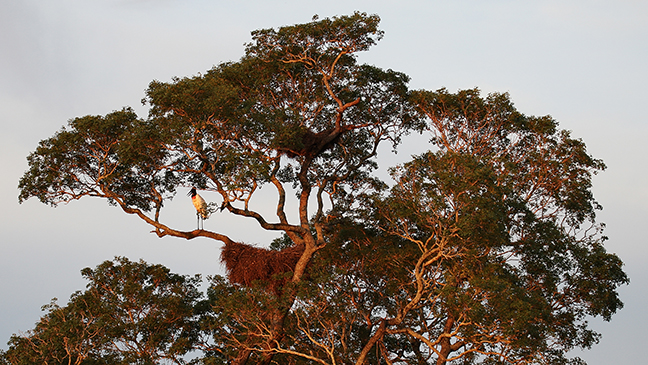
The Jabiru Stork is the tallest flying bird in South and Central America, standing more than four and a half feet tall. Their name means “swollen neck” in a Tupi–Guaraní language. They build large stick nests, up to three feet wide and almost six feet deep. They live in groups near water and feed on small aquatic creatures as well as carrion they find in the water.
©Rich Beckman

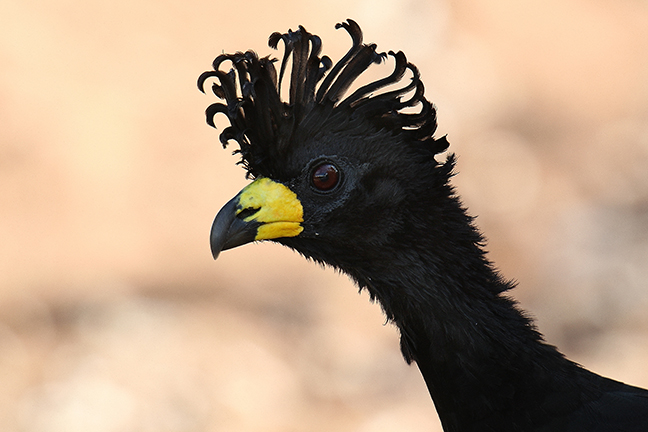
The Bare-faced Curassow is a large bird reaching a length of three feet. It feeds on fruits fallen from trees, seeds and flowers along the edge of semi-deciduous and gallery forests. The males produce a low-pitched booming, similar to the sound of blowing across the mouth of an empty bottle. It is subject to hunting and habitat destruction and the total population is declining rapidly. The International Union for Conservation of Nature has assessed its conservation status as vulnerable.
©Rich Beckman

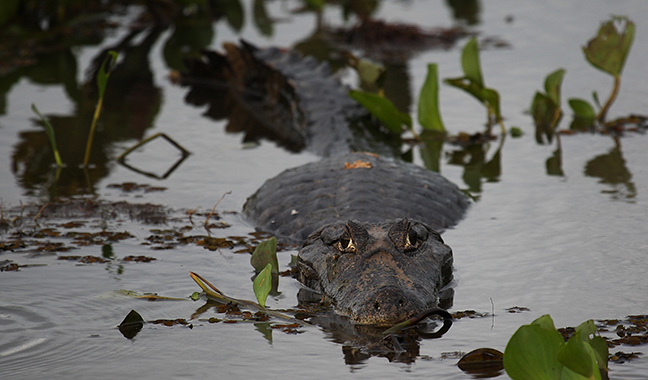
Caimans are found in marshes, swamps, mangrove rivers and lakes throughout Central and South America and are mostly nocturnal. They are a carnivorous predator, feeding mostly on fish, although they will hunt birds, small mammals and reptiles. They are broadly harvested and now supply the vast majority of the hide market in the Americas. Caiman have a rounded nose, like an alligator, but a larger upper jaw and more pointed teeth.
©Rich Beckman

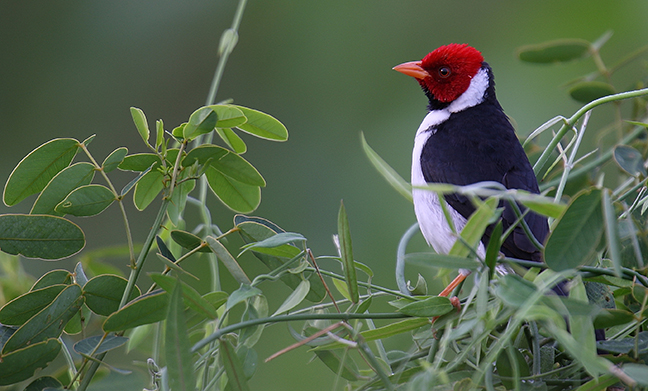
The Red-capped Cardinal occurs primarily in riparian thickets near swamps, mangrove, várzea forest and other semi-open areas near water. They feed on insects, rice and fruit and are usually seen singly or in pairs, perched on branches in the water. They defend permanent territories within which they inhabit and forage.
©Rich Beckman


A dragonfly perches on a broken branch in the Pantanal region of Brazil. At ten times the size of the Everglades, the Pantanal is the largest wetland in the world. Dragonflys are fierce predators thanks to their large eyes, highly maneuverable wings and legs that can form a snagging net. They hunt on the wing and capture only live prey. They feed on beetles, butterflies, moths, damselflies and a variety of other insects.
©Rich Beckman

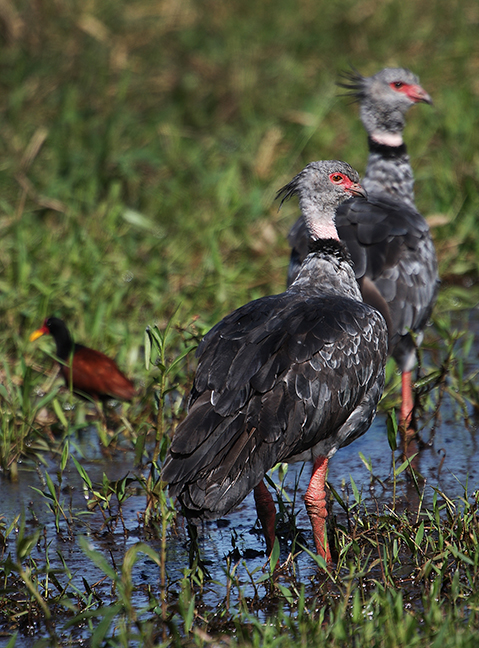
Southern Screamers (Wattled Jacana in background) live in tropical swamps and estuaries and feed on seeds, leaves and plant stems. They have partially webbed feet, but prefer to move on land. They maintain lifelong monogamous relationships and are non-migratory even though they are excellent fliers.
©Rich Beckman

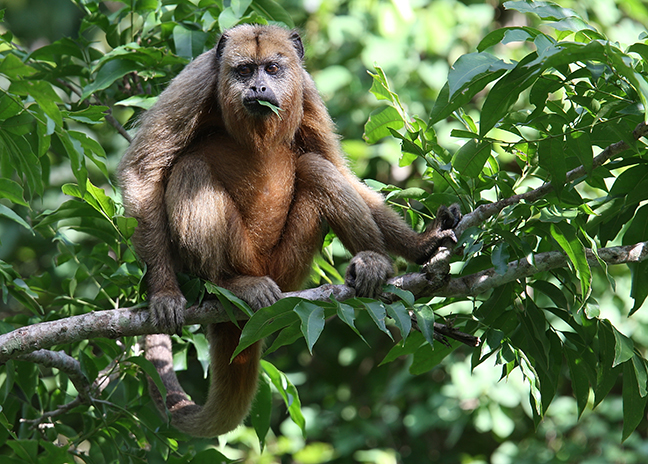
Capuchin monkeys live in rainforests, seasonally inundated forests and mangroves. Fifteenth century explorers to the region named them after the Order of Friars Minor Capuchin, an offshoot from the Franciscans.
They are diurnal and arboreal. They spend almost their entire day searching for food and sleep in trees at night. They often live in groups of 10-35 individuals with a dominant male who has primary breeding rights to all females in the group.
They are considered the most intelligent New World monkeys and are often used in laboratories. They have also become popular pets and attractions for street entertainment, and are hunted for meat by local people. (1/3)
©Rich Beckman

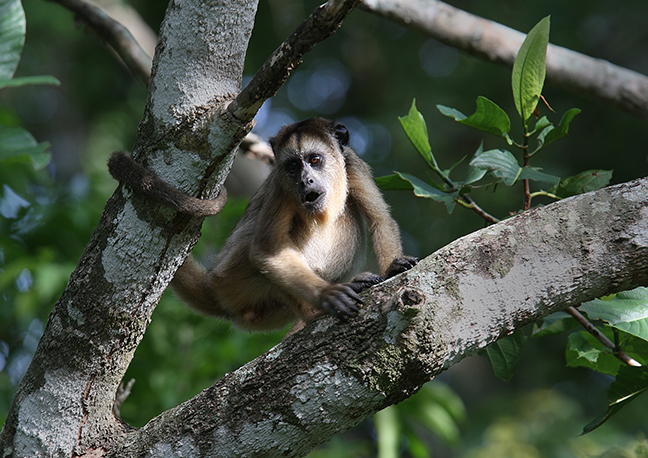
Capuchin monkeys live in rainforests, seasonally inundated forests and mangroves. Fifteenth century explorers to the region named them after the Order of Friars Minor Capuchin, an offshoot from the Franciscans.
They are diurnal and arboreal. They spend almost their entire day searching for food and sleep in trees at night. They often live in groups of 10-35 individuals with a dominant male who has primary breeding rights to all females in the group.
They are considered the most intelligent New World monkeys and are often used in laboratories. They have also become popular pets and attractions for street entertainment, and are hunted for meat by local people. (2/3)
©Rich Beckman

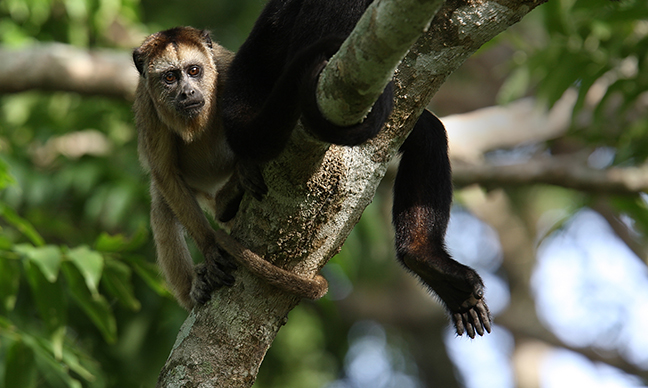
Capuchin monkeys live in rainforests, seasonally inundated forests and mangroves. Fifteenth century explorers to the region named them after the Order of Friars Minor Capuchin, an offshoot from the Franciscans.
They are diurnal and arboreal. They spend almost their entire day searching for food and sleep in trees at night. They often live in groups of 10-35 individuals with a dominant male who has primary breeding rights to all females in the group.
They are considered the most intelligent New World monkeys and are often used in laboratories. They have also become popular pets and attractions for street entertainment, and are hunted for meat by local people. (3/3)
©Rich Beckman


Anhingas live in shallow, sheltered waters and use perches and banks for drying and sunning. They are rarely found out of freshwater. Anhingas do not have waterproof feathers and can therefore stay below the surface for longer periods of time stalking fish around submerged vegetation. They usually stab prey from the side with both mandibles, and a partially opened bill. They hunt small- to medium-sized fish and occasional crustaceans and invertebrates. The word anhinga comes from the Brazilian Tupi language and means devil or snake bird (female pictured). (1/2)
©Rich Beckman

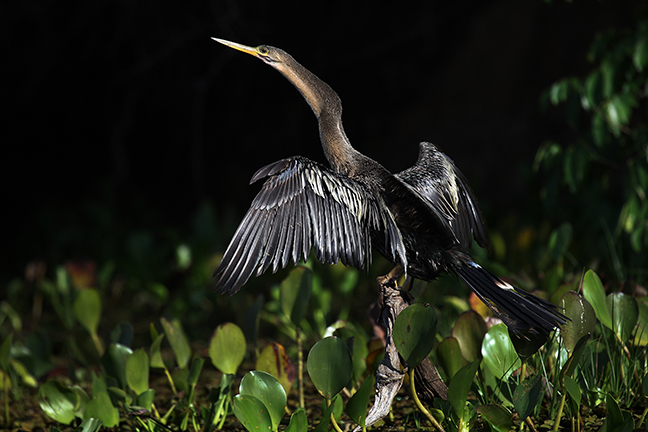
Anhingas live in shallow, sheltered waters and use perches and banks for drying and sunning. They are rarely found out of freshwater. Anhingas do not have waterproof feathers and can therefore stay below the surface for longer periods of time stalking fish around submerged vegetation. They usually stab prey from the side with both mandibles, and a partially opened bill. They hunt small- to medium-sized fish and occasional crustaceans and invertebrates. The word anhinga comes from the Brazilian Tupi language and means devil or snake bird (male pictured). (2/2)
©Rich Beckman

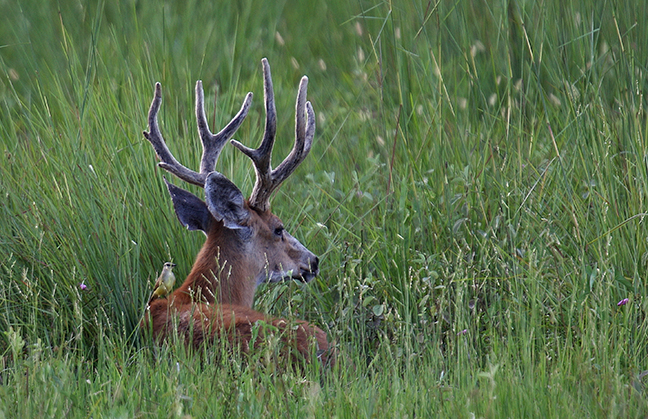
Marsh deer are the largest deer species in South America reaching a shoulder height of almost four feet. Their hoofs spread widely enabling them to move through marshlands without sinking in. They feed mostly on aquatic plants late in the day, remaining secluded in tall grasses most of the day. They move between habitats, following the water levels during the dry and flood seasons of the Pantanal.
©Rich Beckman

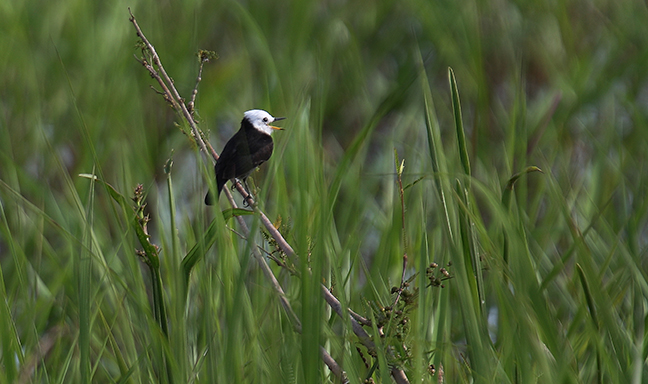
The White-headed Marsh Tyrant is a member of the tyrant flycatcher family and is commonly found in stagnant marshlands where it perches on small shrubs and sallies for flying insects. They will capture dragonflies, grasshoppers and beetles from the vegetation, but most frequently out of mid-air and from shallow water.
©Rich Beckman


The White-faced Whistling Duck has a disjunctive distribution, occurring in Africa and South America and may have been transported to one continent or the other by humans. Adults have a distinctive white face and crown and juveniles (pictured) have a much less contrasted head pattern. They congregate in still freshwater lakes with plentiful vegetation and are mainly night foragers, feeding on grass, seeds and aquatic mollusks. They often perch in branches and are also known as tree ducks.
©Rich Beckman

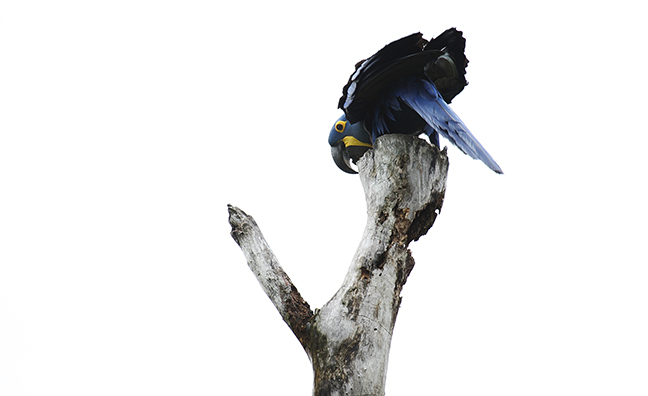
The Hyacinth Macaw, the largest macaw and largest flying parrot species, is found primarily in moist forests with a broken canopy, mature palm forests and grassy marshes. It feeds on seeds, nuts, fruits and vegetable matter, although In the Pantanal, it feeds almost exclusively on palm nuts. Its exceptionally powerful bill, the largest of its kind in the world, allows it to eat otherwise inaccessible nuts and seeds. Macaws play an important role in seed dispersal. They are messy eaters, carrying and dropping many nuts and seeds. Of the 145 species of parrots in Central and South America, 45 are in danger of extinction and all 18 species of macaws are threatened due to habitat loss and heavy exploitation for the pet trade. The United States is the largest market for the exotic pet trade.
©Rich Beckman

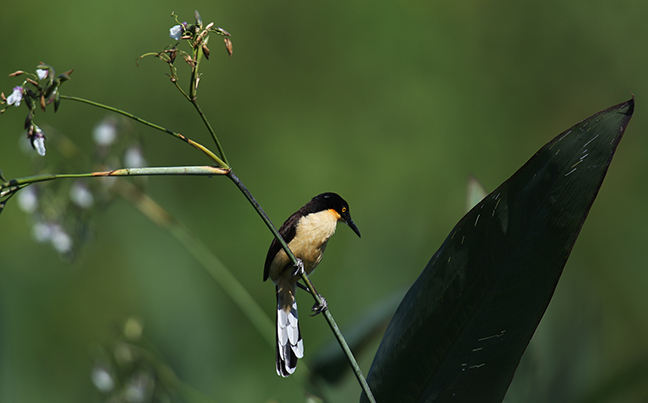
The Black-capped Donacobius is a familiar resident in marshes and wet pastures across much of South America. They feed on invertebrates gleaned from leaves and grass, and also catch flying insects from low perches over water. They mate for life and pairs are seen frequently throughout the day atop thickets of dense streamside vegetation where they engage in antiphonic dueting.
©Rich Beckman

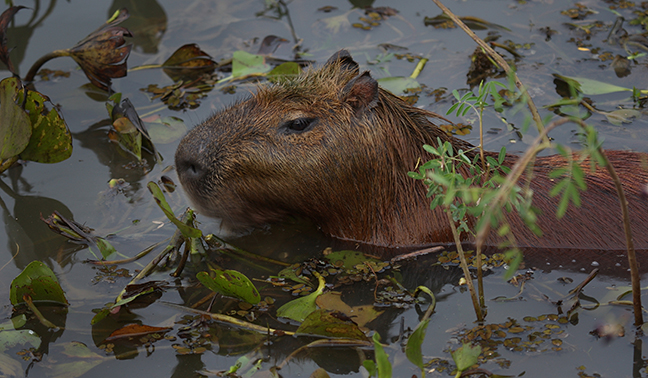
Capybaras are the largest rodents in the world. They live in groups of 10-20 individuals in densely forested areas near bodies of water as well as flooded savannahs and along rivers in tropical forests throughout South America (except for Chile). Adults often weigh more than 100 pounds. They have slightly webbed feet and vestigial tails. They are herbivores and graze mainly on grasses and aquatic plants, fruit and tree bark. They are hunted for meat, their hide and their fatty skin that is used in pharmaceuticals.
©Rich Beckman


The Northern Caracara is an carnivorous scavenger that inhabits various types of open and semi-open habitats and feeds mainly on carrion. They will also prey on live animals including small mammals, amphibians, reptiles, fish, crabs, insects, worms, shellfish and young birds. They hunt on foot, will steal from other birds and often displace vultures from small carcasses. In courtship, they repeatedly toss their heads back while giving a guttural call.
©Rich Beckman

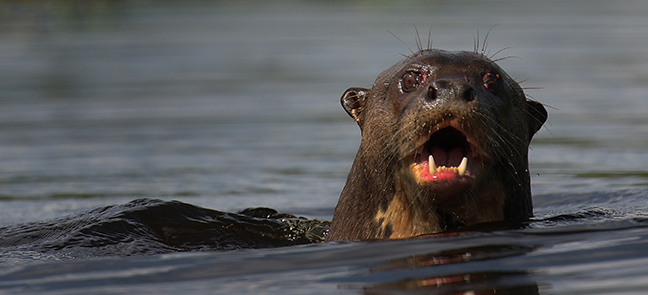
Giant River Otters, highly social animals that live in extended family groups ranging from two to 20 individuals, are the largest otters in the world. They prefer freshwater rivers and streams, which are usually seasonally flooded. Decades of poaching have diminished their populations and the species was listed as endangered in 1999 with less than 5,000 individuals in the wild. They are an apex predator feeding mainly on fish that they catch and consume immediately by grasping firmly between their forepaws and biting at the head. An otter eats six to nine pounds of food per day.
©Rich Beckman

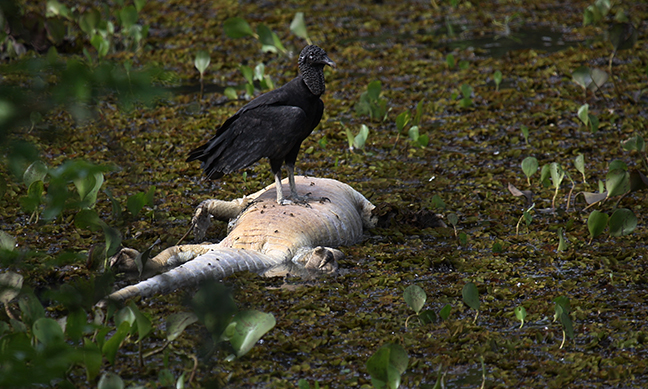
A Black Vulture feeds on a caiman carcass in the Pantanal region of Brazil. Black Vultures are mainly scavengers, but will eat just about anything. They soar high in the sky in search of prey and then hop and run along the ground once they land. They often stick their heads deep into the cavities of dead animals to feed and have featherless heads. They share food with relatives, feeding young for months after they’ve fledged.
©Rich Beckman